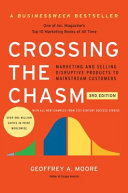

The Technology Adoption Life Cycle is a model that illustrates how different groups of consumers adopt new technologies over time. It is divided into five segments: Innovators, Early Adopters, Early Majority, Late Majority, and Laggards. Innovators are the first to adopt new technologies, often driven by a desire to experiment and explore. Early Adopters are more discerning and are often seen as opinion leaders; they adopt new technologies for the benefits they offer and their potential to create change. The Early Majority represents a larger group that adopts technology once it has been proven and is more mainstream. The Late Majority is skeptical and will only adopt technology after the majority has done so, while Laggards are resistant to change and adopt technology only when they have no other choice. Understanding these segments helps businesses tailor their marketing strategies to effectively reach each group and ultimately cross the chasm between the Early Adopters and the Early Majority, which is often the most challenging transition for technology companies.
Continue readingThe chasm refers to the significant gap that exists between Early Adopters and the Early Majority in the Technology Adoption Life Cycle. Early Adopters are willing to take risks on new technologies, but the Early Majority is more cautious and requires substantial evidence of a product's reliability and value before making a purchase. This gap can be a critical barrier for companies trying to scale their innovations. To successfully cross the chasm, companies must shift their marketing strategies from appealing to innovators and visionaries to addressing the practical needs and concerns of the Early Majority. This often involves refining the product, enhancing its value proposition, and developing targeted marketing campaigns that resonate with this more pragmatic audience.
Continue readingThe Whole Product Concept posits that customers do not just buy a product; they buy a complete solution that fulfills their needs. For technology products, this means considering not only the core technology but also the additional features, services, and support that enhance the user experience. This could include customer service, training, integrations with existing systems, and any other elements that contribute to a seamless user experience. Companies must ensure that they offer a complete solution that meets the expectations of the Early Majority, as this group is less likely to adopt a product that requires them to piece together their own solutions. By focusing on the Whole Product Concept, companies can create a more compelling value proposition that appeals to this critical segment.
Continue readingOne effective strategy for crossing the chasm is to focus on a specific niche market within the Early Majority. By targeting a smaller, well-defined segment of the market, companies can tailor their products and marketing efforts to meet the unique needs of that group. This approach allows companies to build a strong foothold, gain credibility, and establish a loyal customer base before expanding into broader markets. By understanding the specific pain points and requirements of the niche market, companies can design their offerings to deliver maximum value, making it easier to gain traction and ultimately cross the chasm.
Continue readingPositioning is critical in the process of crossing the chasm. It involves defining how a product is perceived in the market relative to competitors and how it addresses the needs of the target audience. Effective positioning communicates the unique value of the product and differentiates it from alternatives. For the Early Majority, clear and compelling positioning can help alleviate concerns about adopting a new technology. Companies should focus on articulating the benefits, use cases, and success stories of their product to build credibility and trust. A strong positioning strategy can help bridge the gap between the Early Adopters and the Early Majority, facilitating a smoother transition into broader markets.
Continue readingA well-defined marketing strategy is essential for crossing the chasm. This strategy should be focused on educating the Early Majority about the product, addressing their concerns, and demonstrating its value. Effective marketing tactics may include targeted advertising, case studies, testimonials, and participation in industry events. Companies should also leverage partnerships with established players in the market to enhance credibility and reach. By creating a comprehensive marketing plan that aligns with the needs of the Early Majority, companies can increase their chances of successfully crossing the chasm and achieving widespread adoption.
Continue readingSales and distribution channels play a crucial role in the process of crossing the chasm. For the Early Majority, having accessible and reliable channels to purchase and support the product is vital. Companies should consider various distribution strategies, including direct sales, partnerships with resellers, and online marketplaces. Additionally, providing adequate training and support for sales teams is essential to ensure they can effectively communicate the product's value to potential customers. By optimizing sales and distribution channels, companies can enhance their reach and facilitate the adoption of their technology among the Early Majority.
Continue reading